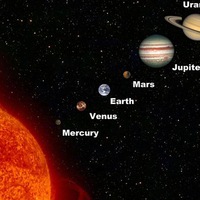Волга - одно из самых узнаваемых и, в то же время, одно из самых запутанных понятий, связанных с Россией.
Если верить сухим расчётам гидрологов, то вся часть Волги немного ниже Казани - это вообще не Волга, а Кама.Точно так средневековые арабские географы видели реку Итиль, истоки которой были где-то в глухих лесах Приуралья, а у одной из столиц Золотой Орды Болгара она делала крутой поворот и несла свои воды в Каспий.
Строго говоря, Волга в нынешнем состоянии начинается только после Волжской ГЭС у Волгограда. А выше по течению (хоть бери волжское русло, хоть камское) - это система проточных озёр, обрамлённых каскадом гидроэлектростанций.
С частями Волги не меньше путаницы. Сюда вмешивалась политика и административные реформы. Например, каждый житель современной Самары уверен, что живёт на Средней Волге. Но традиционно средневолжскими землями считались берега реки от впадения в неё Оки до впадения Камы. Ниже начиналось Понизовое Поволжье, которое действительно выглядит довольно монолитно как в природном, так и в культурном плане. Откуда же тогда взялась здесь Средняя Волга?.. От образованного в 1928 году огромного Средневолжского края с центром в Самаре, растянутого с запада на восток почти на 1000 километров от нынешней Мордовии до Оренбуржья.
Столь же загадочна логика нынешнего политического региона “Приволжье”, связанного с образованным в 2000 году федеральным округом. Согласно этому делению в Приволжье есть и Пермь, стоящая на Каме, и Уфа, от которой до ближайшего волжского берега почти 500 километров. В то же время, в такой логике расположенные на Волге крупные региональные центры вроде Ярославля или Волгограда - это уже не Приволжье. И ладно бы, это просто так называлось... Нет, вся эта политическая логика неминуемо просачивается в восприятие территорий её жителями, сказывается на внутренних связях.
Волга начинает рваться. Изначальный её смысл в нашей культуре как главной дороги из центральных русских земель через населённые другими оседлыми и кочевыми народами берега в Персию и дальше уходит с новой реальностью. Водная дорога теперь больше путь для туристических теплоходов, чем для колоссальной мобильности населения из одного волжского города в другой.
Можно посмотреть на передвижения заметных персонажей позапрошлого и прошлого веков, чтобы понять как работала эта дорога (которая тогда уже была соединена со столицей империи - Санкт-Петербургом). Ленин, курсирующий между Симбирском, Казанью и Самарой. Горький между Самарой и Нижним. Волжский скиталец Шаляпин, успевший поработать грузчиком на пристанях... Ещё тридцать лет назад это действовало примерно так же. Теперь другая логистика, другие технологии, другие людские потоки. Но Волга остаётся важнейшей частью нашей культуры и самосознания.
Сейчас в бассейне Волги по разным оценкам живёт от 45 до 90 миллионов человек. От трети до двух третей страны. Если даже опираться на самые скромные оценки, то это целая Испания. Или Аргентина. Или Южная Корея. Если же просто взять население городов, стоящих непосредственно на берегах реки, то это больше 10 миллионов. Приблизительно Швеция или Куба, Чехия или Тунис.
Разорванную Волгу как ушедшую главную русскую дорогу по воде можно склеить в новой реальности. Склеить без столиц и центров. Горизонтально как гладь волжских водохранилищ. Так можно вместе значительно увеличить её ценность. Как бренда. Как культурного феномена. Как актива в грамотном использовании её берегов, мостов, островов и уникального сосредоточения культурных ландшафтов. Как общей артерии, о которой можно заботиться только вместе. В эпоху когда пароходы не перевозят ежедневно тысячи пассажиров из города в город, цифра нам в помощь.
Если верить сухим расчётам гидрологов, то вся часть Волги немного ниже Казани - это вообще не Волга, а Кама.Точно так средневековые арабские географы видели реку Итиль, истоки которой были где-то в глухих лесах Приуралья, а у одной из столиц Золотой Орды Болгара она делала крутой поворот и несла свои воды в Каспий.
Строго говоря, Волга в нынешнем состоянии начинается только после Волжской ГЭС у Волгограда. А выше по течению (хоть бери волжское русло, хоть камское) - это система проточных озёр, обрамлённых каскадом гидроэлектростанций.
С частями Волги не меньше путаницы. Сюда вмешивалась политика и административные реформы. Например, каждый житель современной Самары уверен, что живёт на Средней Волге. Но традиционно средневолжскими землями считались берега реки от впадения в неё Оки до впадения Камы. Ниже начиналось Понизовое Поволжье, которое действительно выглядит довольно монолитно как в природном, так и в культурном плане. Откуда же тогда взялась здесь Средняя Волга?.. От образованного в 1928 году огромного Средневолжского края с центром в Самаре, растянутого с запада на восток почти на 1000 километров от нынешней Мордовии до Оренбуржья.
Столь же загадочна логика нынешнего политического региона “Приволжье”, связанного с образованным в 2000 году федеральным округом. Согласно этому делению в Приволжье есть и Пермь, стоящая на Каме, и Уфа, от которой до ближайшего волжского берега почти 500 километров. В то же время, в такой логике расположенные на Волге крупные региональные центры вроде Ярославля или Волгограда - это уже не Приволжье. И ладно бы, это просто так называлось... Нет, вся эта политическая логика неминуемо просачивается в восприятие территорий её жителями, сказывается на внутренних связях.
Волга начинает рваться. Изначальный её смысл в нашей культуре как главной дороги из центральных русских земель через населённые другими оседлыми и кочевыми народами берега в Персию и дальше уходит с новой реальностью. Водная дорога теперь больше путь для туристических теплоходов, чем для колоссальной мобильности населения из одного волжского города в другой.
Можно посмотреть на передвижения заметных персонажей позапрошлого и прошлого веков, чтобы понять как работала эта дорога (которая тогда уже была соединена со столицей империи - Санкт-Петербургом). Ленин, курсирующий между Симбирском, Казанью и Самарой. Горький между Самарой и Нижним. Волжский скиталец Шаляпин, успевший поработать грузчиком на пристанях... Ещё тридцать лет назад это действовало примерно так же. Теперь другая логистика, другие технологии, другие людские потоки. Но Волга остаётся важнейшей частью нашей культуры и самосознания.
Сейчас в бассейне Волги по разным оценкам живёт от 45 до 90 миллионов человек. От трети до двух третей страны. Если даже опираться на самые скромные оценки, то это целая Испания. Или Аргентина. Или Южная Корея. Если же просто взять население городов, стоящих непосредственно на берегах реки, то это больше 10 миллионов. Приблизительно Швеция или Куба, Чехия или Тунис.
Разорванную Волгу как ушедшую главную русскую дорогу по воде можно склеить в новой реальности. Склеить без столиц и центров. Горизонтально как гладь волжских водохранилищ. Так можно вместе значительно увеличить её ценность. Как бренда. Как культурного феномена. Как актива в грамотном использовании её берегов, мостов, островов и уникального сосредоточения культурных ландшафтов. Как общей артерии, о которой можно заботиться только вместе. В эпоху когда пароходы не перевозят ежедневно тысячи пассажиров из города в город, цифра нам в помощь.
The Volga is one of the most recognizable and, at the same time, one of the most confusing concepts associated with Russia.
If you believe the dry calculations of hydrologists, then the entire part of the Volga a little lower than Kazan is not the Volga at all, but the Kama. Similarly, medieval Arab geographers saw the Itil River, the sources of which were somewhere in the dense forests of the Urals, and near one of the capitals of the Golden Horde, Bolgar she made a sharp turn and carried her waters into the Caspian.
Strictly speaking, the Volga in its current state begins only after the Volzhskaya HPP near Volgograd. And upstream (even if you take the Volga channel, even the Kama channel) is a system of flowing lakes framed by a cascade of hydroelectric power plants.
There is no less confusion with parts of the Volga. Politics and administrative reforms intervened here. For example, every resident of modern Samara is sure that he lives on the Middle Volga. But traditionally the banks of the river from the confluence of the Oka into the confluence of the Kama were considered to be the Middle Volga lands. Below began the Lower Volga region, which really looks quite monolithic both in natural and cultural terms. Where did the Middle Volga come from then? .. From the huge Middle Volga region formed in 1928 with the center in Samara, stretched from west to east for almost 1000 kilometers from present-day Mordovia to Orenburg region.
Equally mysterious is the logic of the current political region "Volga region", associated with the federal district formed in 2000. According to this division, in the Volga region there are both Perm, standing on the Kama, and Ufa, from which the nearest Volga coast is almost 500 kilometers. At the same time, in this logic, large regional centers located on the Volga like Yaroslavl or Volgograd are no longer the Volga region. And it would be fine, it was just called that ... No, all this political logic inevitably seeps into the perception of the territories by its inhabitants, affects internal ties.
The Volga begins to tear. Its original meaning in our culture as the main road from the central Russian lands through the shores inhabited by other settled and nomadic peoples to Persia and further goes with a new reality. The waterway is now more of a route for tourist motor ships than for the colossal mobility of the population from one Volga city to another.
You can look at the movements of notable characters from the century before last and to understand how this road worked (which was then already connected to the capital of the empire - St. Petersburg). Lenin, plying between Simbirsk, Kazan and Samara. Bitter between Samara and Nizhny. The Volga wanderer Chaliapin, who managed to work as a loader on the piers ... Thirty years ago, it worked in about the same way. Now we have different logistics, different technologies, different human flows. But the Volga remains the most important part of our culture and identity.
Now, according to various estimates, 45 to 90 million people live in the Volga basin. Between one third and two thirds of the country. Even if we rely on the most conservative estimates, then this is the whole Spain. Or Argentina. Or South Korea. If we simply take the population of cities located directly on the banks of the river, then this is more than 10 million. Approximately Sweden or Cuba, Czech Republic or Tunisia.
The torn-up Volga as the main Russian water road that has gone away can be glued together in a new reality. Glue without capitals and centers. Horizontally as the surface of the Volga reservoirs. This way you can significantly increase its value together. As a brand. As a cultural phenomenon. As an asset in the competent use of its shores, bridges, islands and a unique concentration of cultural landscapes. Like a common artery that can only be taken care of together. In an era when steamships do not carry thousands of passengers from city to city every day, the figure will help us.
If you believe the dry calculations of hydrologists, then the entire part of the Volga a little lower than Kazan is not the Volga at all, but the Kama. Similarly, medieval Arab geographers saw the Itil River, the sources of which were somewhere in the dense forests of the Urals, and near one of the capitals of the Golden Horde, Bolgar she made a sharp turn and carried her waters into the Caspian.
Strictly speaking, the Volga in its current state begins only after the Volzhskaya HPP near Volgograd. And upstream (even if you take the Volga channel, even the Kama channel) is a system of flowing lakes framed by a cascade of hydroelectric power plants.
There is no less confusion with parts of the Volga. Politics and administrative reforms intervened here. For example, every resident of modern Samara is sure that he lives on the Middle Volga. But traditionally the banks of the river from the confluence of the Oka into the confluence of the Kama were considered to be the Middle Volga lands. Below began the Lower Volga region, which really looks quite monolithic both in natural and cultural terms. Where did the Middle Volga come from then? .. From the huge Middle Volga region formed in 1928 with the center in Samara, stretched from west to east for almost 1000 kilometers from present-day Mordovia to Orenburg region.
Equally mysterious is the logic of the current political region "Volga region", associated with the federal district formed in 2000. According to this division, in the Volga region there are both Perm, standing on the Kama, and Ufa, from which the nearest Volga coast is almost 500 kilometers. At the same time, in this logic, large regional centers located on the Volga like Yaroslavl or Volgograd are no longer the Volga region. And it would be fine, it was just called that ... No, all this political logic inevitably seeps into the perception of the territories by its inhabitants, affects internal ties.
The Volga begins to tear. Its original meaning in our culture as the main road from the central Russian lands through the shores inhabited by other settled and nomadic peoples to Persia and further goes with a new reality. The waterway is now more of a route for tourist motor ships than for the colossal mobility of the population from one Volga city to another.
You can look at the movements of notable characters from the century before last and to understand how this road worked (which was then already connected to the capital of the empire - St. Petersburg). Lenin, plying between Simbirsk, Kazan and Samara. Bitter between Samara and Nizhny. The Volga wanderer Chaliapin, who managed to work as a loader on the piers ... Thirty years ago, it worked in about the same way. Now we have different logistics, different technologies, different human flows. But the Volga remains the most important part of our culture and identity.
Now, according to various estimates, 45 to 90 million people live in the Volga basin. Between one third and two thirds of the country. Even if we rely on the most conservative estimates, then this is the whole Spain. Or Argentina. Or South Korea. If we simply take the population of cities located directly on the banks of the river, then this is more than 10 million. Approximately Sweden or Cuba, Czech Republic or Tunisia.
The torn-up Volga as the main Russian water road that has gone away can be glued together in a new reality. Glue without capitals and centers. Horizontally as the surface of the Volga reservoirs. This way you can significantly increase its value together. As a brand. As a cultural phenomenon. As an asset in the competent use of its shores, bridges, islands and a unique concentration of cultural landscapes. Like a common artery that can only be taken care of together. In an era when steamships do not carry thousands of passengers from city to city every day, the figure will help us.
У записи 83 лайков,
4 репостов,
2231 просмотров.
4 репостов,
2231 просмотров.
Эту запись оставил(а) на своей стене Андрей Кочетков







































































